

Table of contents
- From A to D
- From G to K
- From M to Z
A flower bulb has grown for every design idea in the bed, on the balcony and in living rooms. Of course, not all onion bloomers are frost-resistant and have to overwinter in a species-appropriate manner. This guide will make you familiar with when to professionally dig up flower bulbs, store them correctly and guide them through the winter in an exemplary manner. Here you can read tried and tested information for 15 types of bulbs from A, such as cyclamen, to Z, such as ornamental onion.
From A to D
cyclamen (cyclamen)
A colorful array of cyclamen species for spring, summer and autumn brings cheerful splashes of color to the flower bed and balcony. The robust European species have a reliable frost hardiness of up to - 23 degrees Celsius, which improves from year to year.

How to overwinter cyclamen in beds and pots:
- Cut back deciduous species after drawing in to a few centimeters above the tuber
- In the year of planting and the two following years, cover the soil in the bed and pot with leaves, bark mulch or fleece
- Additionally cover pots or boxes with foil or jute
- Alternatively, place planters in a bright, frost-free location behind glass
Please note that evergreen and wintergreen species continuously evaporate water. Therefore, water your cyclamen in winter as well, as soon as the soil dries up.
Tip:
Cyclamen for indoor culture bloom from September to March. The tubers go dormant in summer. For this reason, hibernation becomes oversummer. In a shady, cool place in the garden, water the tubers in the pot in small sips. Parallel to the start of sprouting in early autumn, pot the oversummer cyclamen in fresh substrate and start with the normal care program on the partially shaded windowsill.
squill (Scilla)

The small, maximum 1 cm large flower bulbs do not show that they survive temperatures down to - 23.4 degrees Celsius unscathed. In fact, squills quickly overgrow even in heavy garden soil and form picturesque carpets of flowers. On the way there, the young tubers are nevertheless grateful for a light winter protection. In the year of planting, simply cover the bed area with autumn leaves and fir fronds.
variegated root, variegated leaf (caladium)
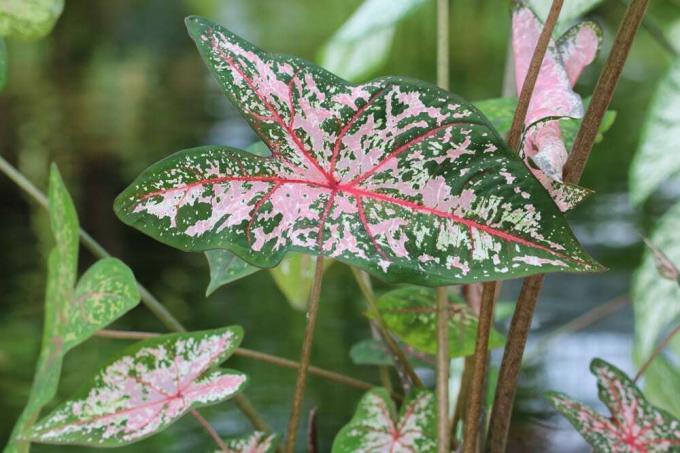
The popular houseplant drives its pretty leaves out of a fleshy tuber. In the fall, chickweed draws in its colorful foliage and goes into dormant growth. Mistakenly, indoor gardeners misinterpret this process and throw away the exotic plant. In fact, the imposing elephant ear is well suited for perennial cultivation. How to overwinter the dormant tubers:
- Chop the fleshy onion
- Cut off dead leaves
- Bury in a box of dry peat or sand
- Store in a cool, dark cellar
In spring, pot caladium tubers in potting soil and propel them in a bright window seat at 21 degrees Celsius.
dahlia (Dahlia)
The procedure for overwintering dahlias is exemplary for a variety of non-hardy bulbs and tubers. Our instructions are dedicated to the proven method in detail and refer to it in this guide for other adequate types. Here's how to do it step-by-step:
- Stop fertilizing from the beginning of September
- Water gradually less from mid-October, but do not let the soil dry out
- After the first frost, cut off all the stems except for 10 centimeters above the tuber
- Use a digging fork to loosen the soil and lift out the dahlia tubers
- Shake off or brush away soil
- Sort out intact tubers and let them dry upside down for a few days
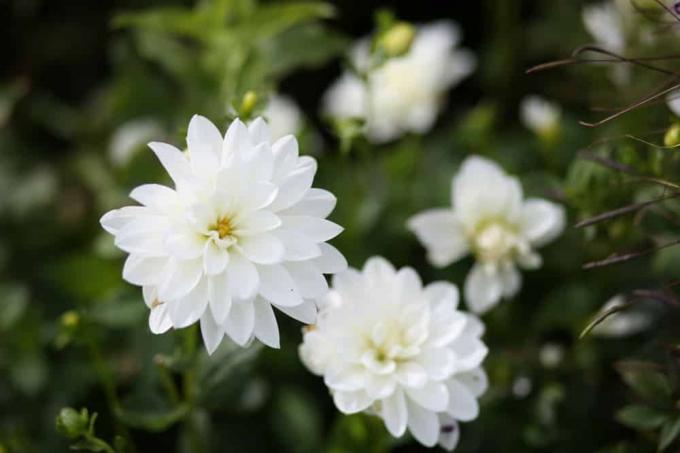
Dahlia tubers will not form their buds for the next season until they have experienced a cold stimulus with temperatures near freezing. Therefore, wait for the first nightly frost before digging up the rhizomes and wintering them. After the tubers have dried, trim the roots to a few inches and dust the cuts with rock flour or charcoal ash. The remainder of the stem, which is 10 centimeters long, remains on the rootstock. Now fill wooden boxes with sand or peat. In it you bury the dahlia tubers next to each other without touching points. The plants overwinter in a dark, airy location at a cool 5 degrees Celsius. Cellars, the attic or a windowless, frost-free garage are well suited as winter quarters.
Dahlia tubers should be inspected at regular intervals. Specimens with rotting spots or pest infestation are sorted out. It is beneficial if you rotate the bulbs on this occasion. Although dry conditions are important for the overwintering process, the tubers must not dry out completely. If the epidermis threatens to wither, please spray dahlias with lime-free water.
From G to K
gladiolus (gladiolus)

With their majestic flowering candles, gladioli attract everyone's attention from summer until the first frost. The magnificent iris plants are happy to repeat the spectacle of flowers over several years, provided they are protected over the winter. Thanks to its subtropical origins, temperatures below freezing mean the inevitable end for a gladiolus. You can effectively prevent this dilemma with the following procedure:
- After the first frost, cut off the drawn-in parts of the plant
- Dig up the tubers and tap off the remaining soil
- Cut off daughter bulbs and long roots with a sharp, sanitized knife
Place the cleaned gladioli bulbs with the roots up in a box with slightly damp sand. Alternatively, wrap the rhizomes in peat dust or newspaper. The tubers hibernate in a dark, cool and airy place at a maximum of 15 degrees Celsius until early spring. Please do not throw away the daughter bulbs. Ideally, you use the quiet winter time to drive the nodules into seed soil so that they bloom after 3 years at the latest.
Golden Alstroemeria (Alstromeria aurea)

In 1833 a magnificent onion flower found its way into our gardens from Chile, and it has lost none of its exotic magic to this day. The golden-yellow-orange calyxes shine from June until the first frost. The underground tuber is only conditionally hardy and depends on protective measures. Cut off the plant remains that have been pulled in. Then cover the root disk with leaves and fir branches. Where the thermometer falls below -15 degrees Celsius in winter, we recommend overwintering using the dahlia method described in detail above.
lucky clover(Oxalis tetraphylla formerly Oxalis deppei)

If you want to give a little boost to luck in the bed and on the balcony, four-leaf clover bulbs are an excellent choice. The magical leaves sprout from bulbs that are 1.5 to 3.5 centimeters long. From June to October white or pink flowers are enthroned. The sorrel plant is not hardy, so it is preferably cultivated in pots or balcony boxes. How to overwinter the flower bulbs correctly:
- Grant in autumn when temperatures drop below 10 degrees Celsius
- Cut off faded flowers and leaves
- Place in a bright location at an ideal 15 degrees Celsius
- Water more sparingly
- Do not fertilize between October and March
In April, you can wake lucky clover from hibernation by repotting the flower bulbs in fresh substrate and resuming the normal care program.
Indian flower cane(Canna indica)

For more than 200 years, Indian cane flowers have fascinated home gardeners when they spread a South Seas feeling in the garden with summer blooms. Majestic stalks with opulent flowers rise from tubers up to 60 cm in size and are in the limelight from June to October. So much exotic splendor is not up to a Central European winter. A single frosty autumn night is enough for the herbaceous parts of the plant to withdraw. Cut the Indian flower cane back to 15 centimeters in order to overwinter the tubers taken up dry and cool according to the dahlia method.
Calla(Zantedeschia)

Bulbous calla lilies add an elegant touch to the summer garden with white or colored funnel-shaped flowers. Zantedeschia, which blooms from June to August, is native to South Africa and extremely sensitive to cold. Cut back the dead plant parts to 8 centimeters before the onset of winter. You then dig up calla bulbs and brush off the remaining soil. After they have air-dried for a few days, winter the bulbs. A dark, airy room with temperatures not exceeding 15 degrees Celsius is ideal for storage. Please check your floral winter guests regularly. If the tubers shrivel due to excessive drought, spray them with a little room-warm water.
From M to Z
Montbretia(Crocosmia)
Montbretia cannot deny their close relationship with gladioli. Both flower beauties come from subtropical regions and sprout from strong flower bulbs. The majority of Montbretia varieties are somewhat more sensitive to cold than gladioli. We recommend picking up the rhizomes before the first frost and storing them in dry peat soil in the dark winter quarters. You can either drive out the overwintered tubers from March or put them in the bed in mid-May.

Tip:
Numerous flower bulbs and tubers look confusingly similar in the winter quarters. Label each plant so you can assign each species to its proper location at the beginning of planting season.
belt sheet(Clivia)
The evergreen houseplants give off an unspectacular appearance in summer and autumn. This changes abruptly when huge, brightly colored umbels of flowers unfold from February to May. Before that, clivia tubers go through a hibernation of several months in order to draw strength for the furious spectacle of flowers. How to overwinter a belt leaf with gardening expertise:
- In autumn change location to a bright, unheated room
- Ideally set up at temperatures of 5 to 10 degrees Celsius
- Water in sips and do not fertilize

Check your oar blade regularly in the winter quarters. If the budding of flower stalks signals the beginning of the flowering period, the houseplant will return to its usual bright spot in the living room. Increase the watering and add a little liquid fertilizer to the irrigation water.
knight star(Amaryllis)
With flowers up to 20 centimeters in size, a knight star shines brightly with the Christmas tree. We owe the magic of winter flowers to voluminous, spherical flower bulbs. Since amaryllis are native to South America, they lack any hardiness. As a result of the winter flowering period, a special care program must be observed so that the exotic plant decides to sprout flower stalks and buds. How to do it right:
- Water gradually less from July until the substrate has dried out by the end of August
- Stop giving fertilizer at the beginning of August
- Keep in dry soil in darkness and 5 to 9 degrees Celsius from September to November

6 to 8 weeks before the start of the desired flowering period, pot the flower bulbs in fresh substrate. Then put the amaryllis in a bright window seat that is not in full sun with temperatures of 18 to 22 degrees Celsius. As growth progresses, increase water and nutrient intake.
chocolate flower(Cosmos atrosanguineus)
The exotic rarity comes from the sun-drenched regions of Mexico and inspires with seductively fragrant flowers from July to October. As a result, a chocolate flower can only be certified as having a limited winter hardiness with a minimum temperature of – 6 degrees Celsius. Before the first frost, cut off all stems to a hand’s breadth above the ground and dig up the tubers.

Together with the remains of the stem, your chocolate flowers will overwinter in a box with dry peat or sand at a cool 5 degrees Celsius. The hibernation ends from mid-March by planting the tubers in pots with fresh potting soil. On the sunny, warm window sill, the normal care program begins gradually.
steppe candle(Eremurus)
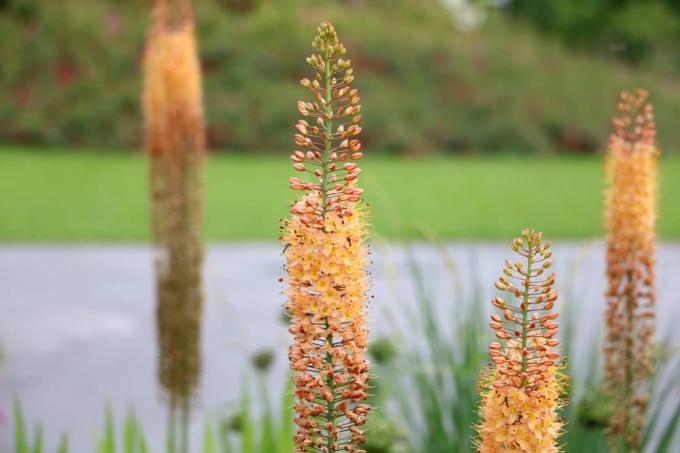
Steppe candles come with a frost hardness of up to - 23.4 degrees Celsius. The flower bulbs have to develop this robust winter hardiness over the course of the first two years. Please protect the newly planted bulbs with a layer of compost, bark mulch or autumn leaves. Since the buds are just below the surface of the earth in spring, they are endangered by late frost. Covering with garden fleece from March to mid-May reliably prevents frost damage.
ornamental onion, flower onion(allium)
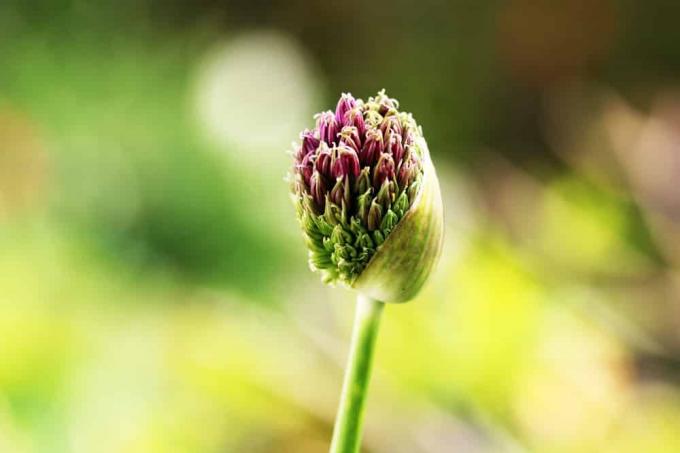
Ornamental onions live up to their name in rock gardens and flower borders. Home gardeners are spoiled for choice among multifaceted varieties, such as ball onion with flowers up to 20 centimeters in May and June. What all species and varieties have in common is that they are frost-resistant in regions up to hardiness zone 6 (-17.8 to -23.3 degrees Celsius). In the year of planting and in harsh locations, we recommend overwintering the bulbs under a protective layer of compost or leaves.
 garden editorial
garden editorial I write about everything that interests me in my garden.
Learn more about overwintering plants

How much frost do horned violets tolerate?
Horned violets are a popular bedding plant that survives the winter. They are planted either in spring or in autumn and overwinter in the beds. They usually do without frost protection, which is why they are also often used as easy-care plants for graves.

Is the dragon tree hardy? 7 tips for wintering
Dracaena, the botanical name of the dragon tree, is not just coincidentally reminiscent of a palm tree. Like the palm trees, it also likes it warm and sunny. He is not hardy and has to hibernate in the house. Here are some tips.

Are asters hardy? 5 tips for wintering
The summer aster and the autumn aster not only differ in their flowering time. When winter arrives, another difference becomes apparent: one dies, the other survives the frost.
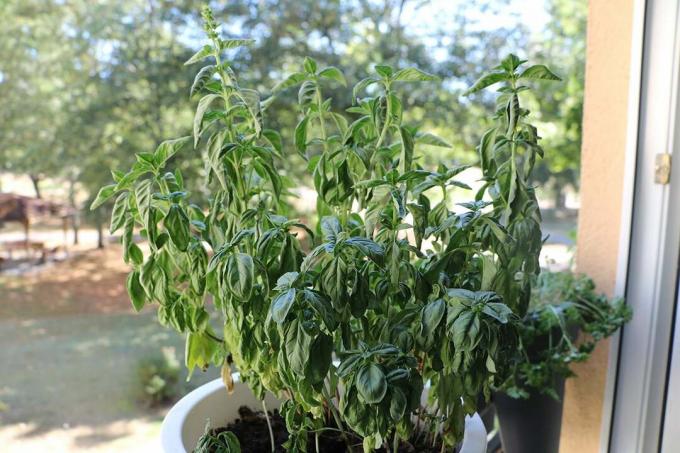
Overwintering basil: 7 tips for caring for it in winter
If you want to enjoy fresh basil in winter, you can overwinter it with a little skill. With these 7 tips you will definitely succeed!
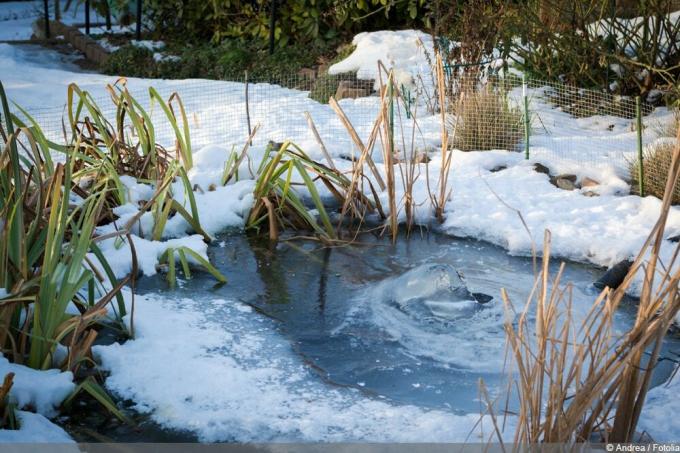
Overwintering pond plants | Aquatic plants in winter
The garden pond is an important design element in the garden for many hobby gardeners. With the right pond plants, it draws everyone's attention. The numerous species differ in their appearance, their planting location on or in the pond and, last but not least, their winter hardiness.
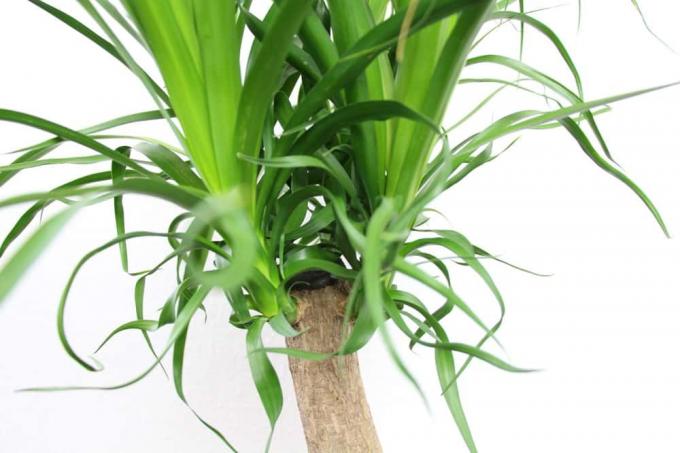
Overwintering Yucca Palm - Is It Hardy?
Although yucca palms are indoor plants, they like to be outdoors in the summer. However, most species are not hardy. It is necessary to winter them indoors. You can find out how to do this here.
